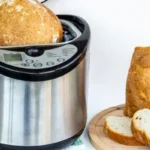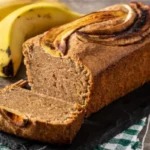Who doesn’t love a generous serving of stuffing alongside their turkey on Thanksgiving? For those following a gluten-free diet, however, the traditional bread-based stuffing can be a challenge. But don’t fret! There’s a way to make gluten-free bread cubes perfect for your next holiday feast.
In this blog post, we’ll take you through the step-by-step process of how to make gluten free bread cubes for stuffing – so that you and your loved ones can enjoy a delicious stuffing without any gluten!
How To Make Gluten Free Bread Cubes For Stuffing | Step By Step Procedure
Step 1: Choose the Right Gluten-Free Bread
The first step to making gluten-free bread cubes is finding the right type of bread. Not all gluten-free breads are created equal, and some work better than others for making bread cubes for stuffing.
Look for a bread that’s sturdy and has a close texture, rather than one that’s fluffy and crumbly. Some good options include Udi’s Gluten-Free White Sandwich Bread, Rudi’s Gluten-Free Multigrain Bread, Schar’s Gluten-Free Artisan Baker White Bread, or Canyon Bakehouse’s Gluten-Free Heritage Style Whole Grain Bread.
Step 2: Dry Out the Bread
To make bread cubes, you need dry bread that won’t become mushy when mixed with liquid and other stuffing ingredients. You have two options for drying out gluten-free bread.
Either buy it a few days in advance and put it out in the open air, or cut the bread into cubes and bake it for approximately an hour at a moderate temperature. If you’re in a rush, you can also quickly dry out and crisp up the bread in the oven or toaster.
Step 3: Cut the Bread into Cubes
Once your bread is dry, it’s time to cut it into cubes. Aim for cubes that are around 1 inch in size, although slightly bigger or smaller won’t matter too much.
You can cut the bread into cubes with a sharp knife, or for more even cubes, use a bread knife or a serrated knife with a sawing motion. Be sure to slice the crust off the bread before cutting it into cubes, as crusts can make the stuffing too dry.
Step 4: Season the Bread Cubes
Gluten-free bread can be quite bland and tasteless on its own, so it’s important to season the bread cubes before using them in your stuffing.
Add your preferred seasonings, such as salt, pepper, garlic powder, onion powder, thyme, sage, rosemary, or poultry seasoning, and toss the bread cubes to coat them evenly. You can also drizzle some melted butter or olive oil over the bread cubes for added flavor and moisture.
Step 5: Store Bread Cubes
Bread cubes can be kept in the freezer for up to a month or kept at room temperature for up to a week if you don’t intend to use them right away.
Spread the bread cubes out on a baking sheet, freeze them for a few hours, and then move them to a freezer bag or container to prevent them from getting soggy in the freezer.
When you’re ready to use the bread cubes, simply thaw them at room temperature for a few hours or in the refrigerator overnight.
Also Read: What Are Easy Meals For Camping?
What Makes Good Stuffing Bread?

There’s nothing quite like the comforting taste of a steaming hot turkey and stuffing on a cold winter day. However, the key to a delicious stuffing is the bread that is used! So, what exactly makes good stuffing bread? Let’s explore the top qualities of bread that make for the perfect stuffing.
1. Stale Bread
The first quality of a good stuffing bread is that it is typically stale bread. Stale bread is perfect for stuffing because it soaks up all the delicious juices and flavors of the stuffing ingredients.
Fresh bread, on the other hand, will turn the stuffing into a mushy mess. So, don’t feel bad about using that loaf of bread that’s been hanging around on your countertop for a bit too long.
2. Textured Bread
When it comes to using bread, not all bread is created equal. Soft, commercial bread frequently used for sandwiches is simply too delicate for stuffing.
You want a hearty, crusty bread with some texture for your stuffing bread. A hearty bread like French bread or sourdough works really well. The denser the bread, the better the texture of the stuffing.
Also Read: What Are Easy Meals For Camping?
3. Savory Bread
If you’re looking for dimension in your stuffing, look to use savory bread. The addition of herbs and spices in the bread can help to add depth to the stuffing and make something that looks like a humble dish into a knock out centerpiece!
Consider using a classic savory bread like an herb ciabatta or even adding rosemary or thyme to your bread recipe.
4. Neutral Flavor
Unlike sandwich bread, the bread for stuffing should have a relatively neutral flavor. This way, the bread won’t overpower the other delicious ingredients in the stuffing.
It will be challenging to balance the flavors of the stuffing if the bread has a strong flavor. This means that you should avoid using bread that has a strong taste such as garlic or onion bread.
5. Properly Dried Bread
Last but certainly not least, the bread that’s used for stuffing should be properly dried out. This means cutting the bread into cubes and letting it dry overnight or leaving it out to dry.
To guarantee that the bread is perfectly dry before use, try to purchase it a few days in advance. Properly drying the bread helps it hold up better in the stuffing and ensures that it doesn’t become soggy.
Also Read: What Food To Pack For Camping?
Bottom Line:
Now you know How To Make Gluten Free Bread Cubes For Stuffing. Making gluten-free bread cubes for stuffing can be easy and delicious with the right techniques.
The best gluten-free bread should be chosen, dried, sliced into cubes, seasoned, and stored correctly. You may now eat gluten-free stuffing that is equally delicious as the regular stuffing.
With this simple tutorial, you’re ready to impress your guests with a delicious gluten-free stuffing at your next holiday gathering!



